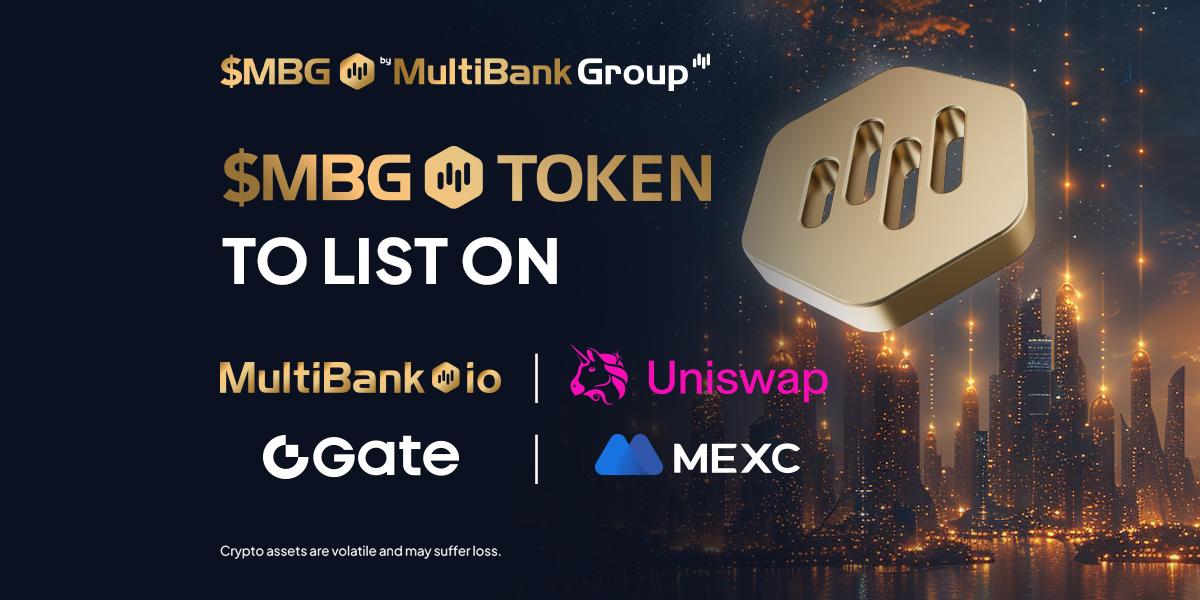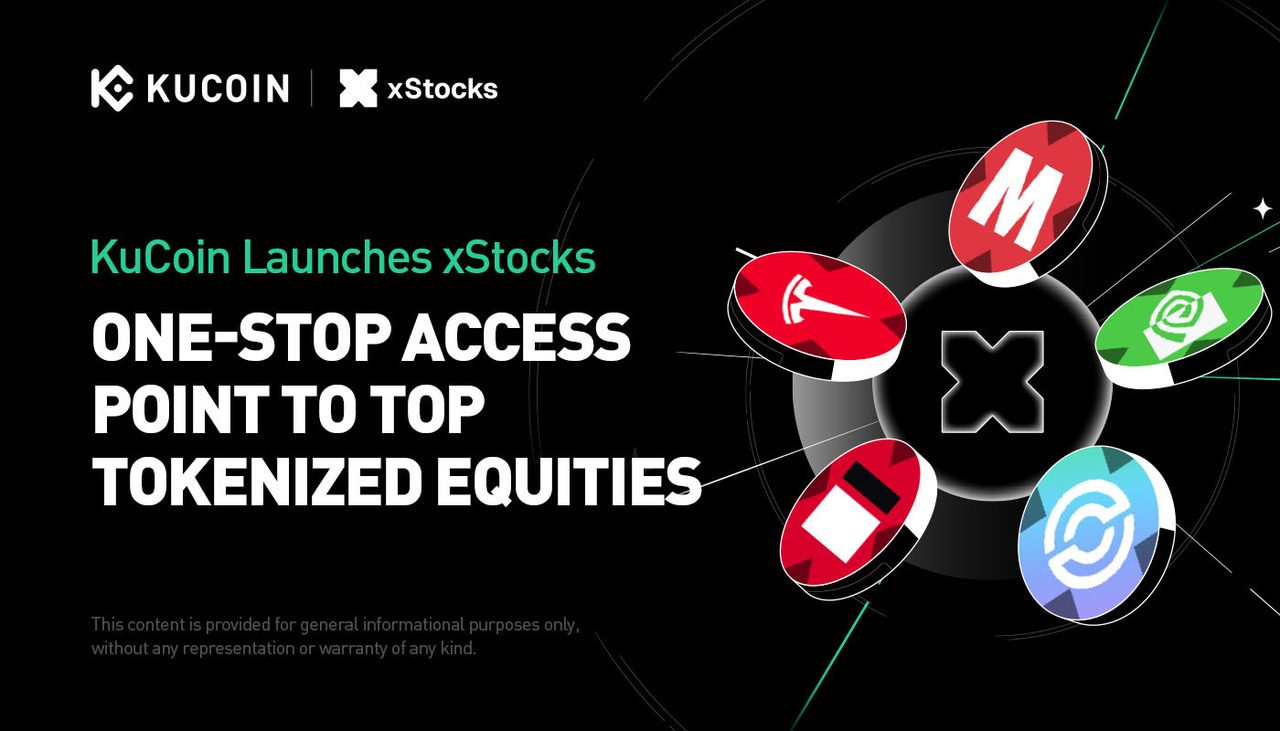Key Points:
- Reports of the Multichain team’s arrest have sent shockwaves across the Fantom ecosystem.
- Despite $129 million in trading activity, the FUD has led to a 5x rise in daily bridging volumes.
- What is most concerning is the team’s lack of communication.
Reports of the Multichain team’s arrest have sent shockwaves across the Fantom ecosystem. Yet, a deeper inspection of the on-chain data reveals that the bridging volumes show no hint of fear.

Current situation of Multichain
According to comments from various groups and social media users, there was an unusual delay in the receipt of Multichain cross-chain money on May 24. Later, Multichain announced that, although most of the protocol’s cross-chain routes were operational, due to force majeure, certain cross-link routes were offline, and the period for service recovery was unclear.
Pending transactions will be immediately credited once the service is restored. According to many sources, Multichain co-founder and CEO Zhao Jun is now unavailable for comment. Qian Dejun, the Fusion Foundation’s founder and former co-founder of the project, also said on Twitter that he has yet to contact Zhao Jun.
For a time, many rumors circulated, and it was even reported that the team had been jailed. Because of the market attitude of dread, reluctance, and doubt, the cross-chain bridge’s single-day transaction volume soared by 5 times. Some claim that the project has failed, but whether this is true, crypto researcher DeFi Ignas, on the other hand, feels that the suspension of Multichain did not result in a considerable quantity of cash outflow, based on data indications on the chain.

According to Ignas, Fantom is the most vulnerable to wrapped tokens on Multichain. This means that Fantom is especially susceptible to any negative consequences of the alleged arrest of the team. This is because Fantom is heavily reliant on Multichain’s wrapped tokens, accounting for 35% of its total value locked (TVL).
Moreover, Multichain issues 40% of non-FTM assets, amounting to a substantial $650 million. This implies that if anything were to happen to the protocol, the entire value of these assets may suffer significantly.
It also manages 81% of Fantom’s entire stablecoin market value. Stablecoins are digital currencies whose value is linked to the value of a physical object, such as the US dollar. They are often used to protect against market volatility. But, if anything were to happen to Multichain, the value of these stablecoins may plummet, causing instability in the Fantom ecosystem.
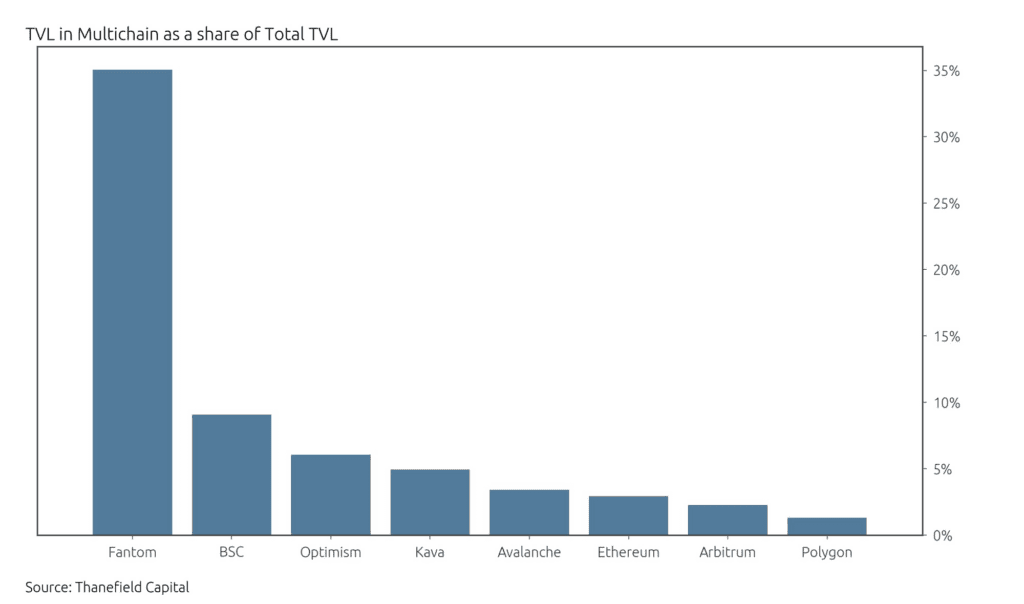
Multichain’s transaction volume is $129 million, second only to Stargate. But, when seen in a larger context, cross-chain bridge transaction volumes show no signs of panic.
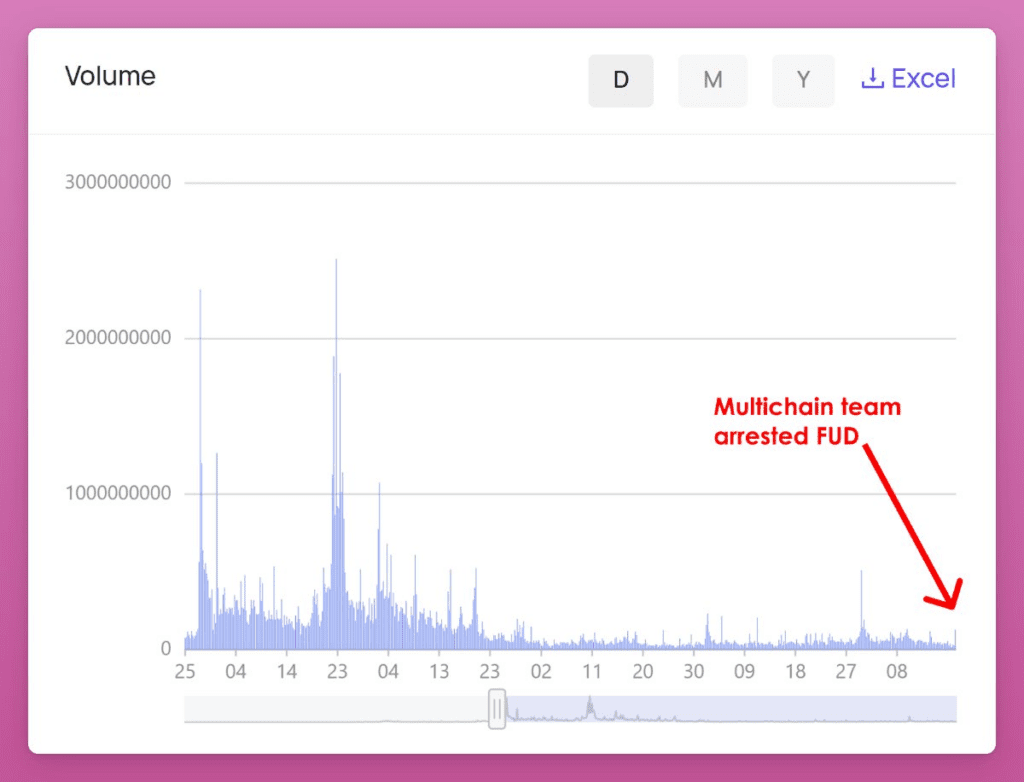
Thanefield Capital’s research department, An Ape’s Prologue, said that Fantom is the protocol with the most exposure to Multichain:
- One is that 35% of TVL is locked on Multichain, and it issues a major portion of the chain’s assets.
- The second is that, excluding its native token FTM, the protocol issued 40% of Fantom assets. This reached $650 million in assets (mostly encapsulated assets), showing a high dependence on Multichain.
- The third factor is a stable currency. The market value of its stable currency ($458 million) accounts for 81% of the overall market value of the Fantom ecological stable currency ($567 million), with USDC leading the way with $194 million.
It is reasonable to expect a huge outflow of market money based on this, however, the withdrawn funds are just 18 million US dollars more than the deposited funds. That’s just 1% of its entire TVL of $1.78 billion, and there’s not much to be scared about here, either.
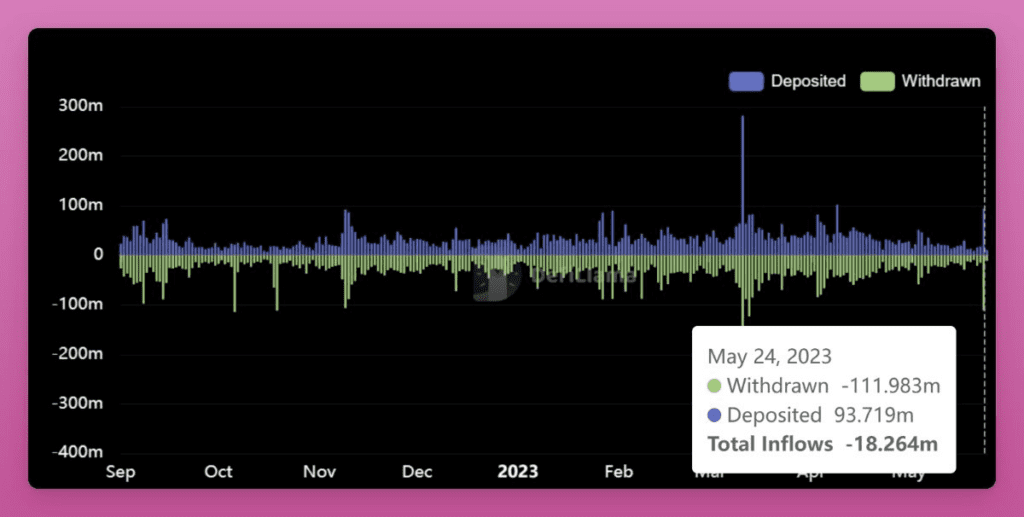
Fantom should have seen a big outflow of TVL due to its dependence on Multichain. Despite a 9.55% drop in USD terms, the data revealed no major outflows.
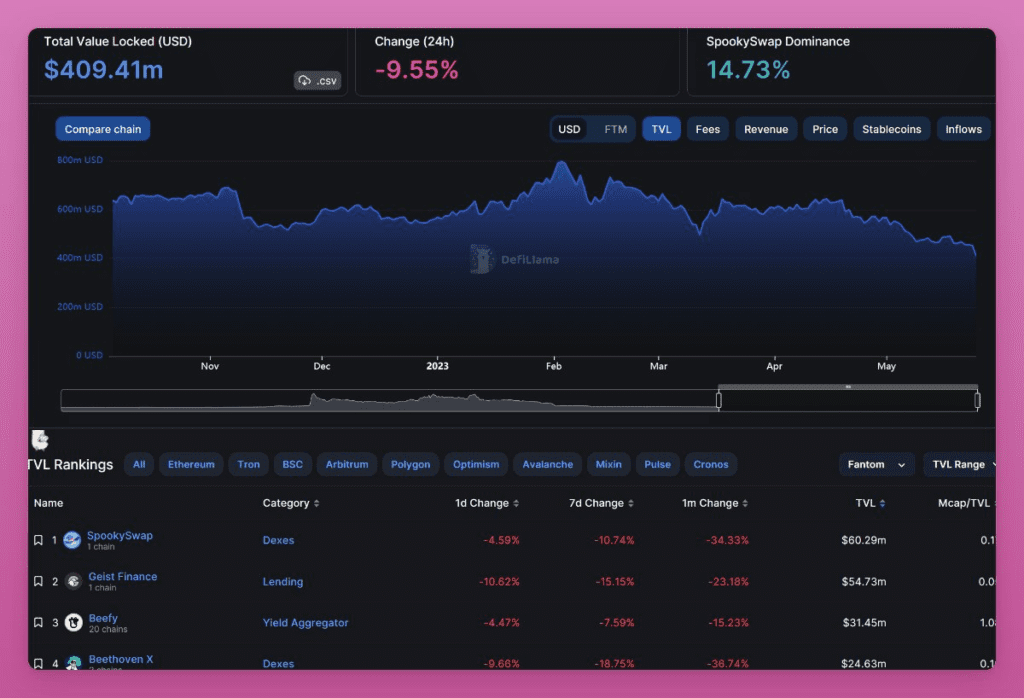
What is most concerning is the Multichain team’s lack of communication. According to reports, the current Multichain CEO, Zhaojun has not been online in a week. This has caused many cryptocurrency investors and traders to be concerned about the project’s survival.
The defense comes from the parties involved
Important actors in the crypto industry are fortifying their defenses as worries rise about the condition of Multichain, a crucial venue for transferring assets between blockchains.
Four days after apparent technical faults began limiting some users’ capacity to withdraw tokens from the protocol, wild speculations about Multichain’s safety and the destiny of its crew have begun to fill the hole left by the platform’s silence. A single tweet blaming certain cross-chain outages on force majeure has only fueled popular suspicion that something is wrong.
Regardless of Multichain’s exact situation, the light-on-facts environment is forcing an increasing number of companies to minimize risk right now. These replies demonstrate how crypto bridges have the ability to do much more harm than the most visible and well-known danger to bridges.
Binance has temporarily halted transfers of wrapped tokens from the Multichain Bridge due to days-long transaction delays.
Deposits of eleven tokens bridged to Binance Chain, Ethereum, Avalanche, and Fantom were stopped by the world’s biggest exchange.
A Multichain wrapped asset is locked up in a Multi-Party Computation (MPC) node on the source chain before being minted on the destination chain. An MPC node is a digital gateway that is controlled by individual wallets, each of which has a private key that is partitioned, encrypted, and shared by numerous parties.
The problem is exacerbated by Multichain’s dominance among bridges. According to Messari and DeFiLlama statistics, it is the third-largest bridge protocol in terms of transfer volume and total value locked.
Multichain, like other bridges, employs a mint-and-lock technique to transfer assets across the 92 blockchains with which it interacts. For example, if a USDC stablecoin holder bridges the asset from Ethereum to Fantom through Multichain, the token is locked up in an Ethereum smart contract and then released afresh on Fantom – in this instance, as a “wrapped” token called anyUSDC.
According to DeFiLlama, Multichain’s anyUSDC and other wrapped USDC tokens like it controls 50% of Fantom’s stablecoin market. This is despite the fact that all USDC on Fantom are bridged assets rather than native assets that Circle releases directly into the chain. As a result, all USDC tokens on Fantom rely on bridges to maintain their value.
The Fantom ecosystem’s dependence on Multichain hasn’t yet frightened market players into a mass departure. According to statistics from terminal-builder Parsec, overall metrics such as total value locked have remained quite stable despite minor outflows to other chains.
During the Multichain madness, Squid Router also observed an increase in activity. Bridge transactions on Axelar jumped sixfold during the spike, according to sources familiar with the situation.
Conclusion
Maybe the worst is yet to come, but on-chain data does not suggest significant outflows. What is concerning is the lack of communication between the teams. If you are worried about the security of your assets, keep them on their own blockchain. Because as we all know, DeFi is always a potentially dangerous setting in which not everyone can regulate their own safety.
DISCLAIMER: The information on this website is provided as general market commentary and does not constitute investment advice. We encourage you to do your own research before investing.
Join us to keep track of news: https://linktr.ee/coincu
Harold
Coincu News





















